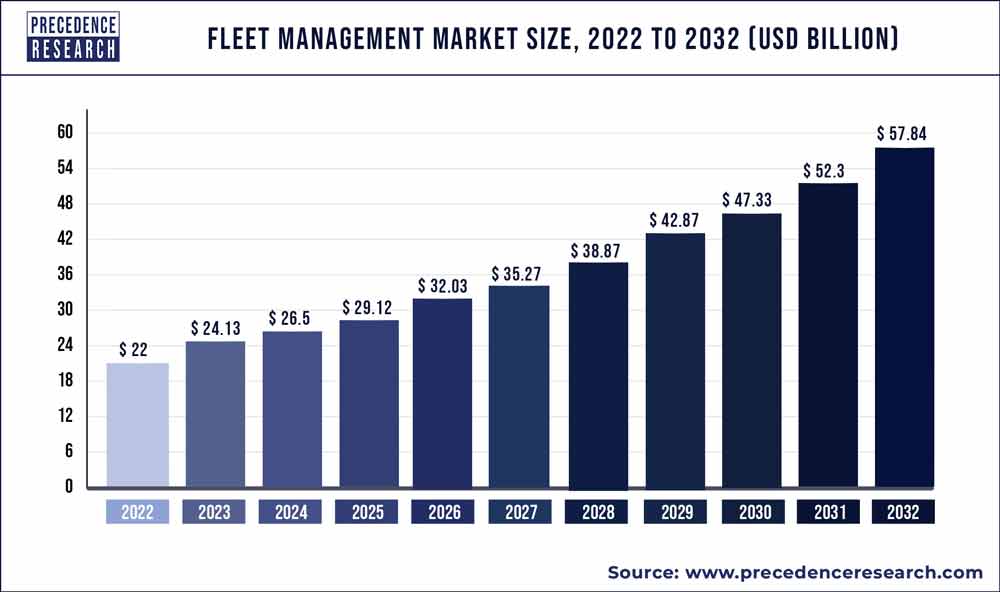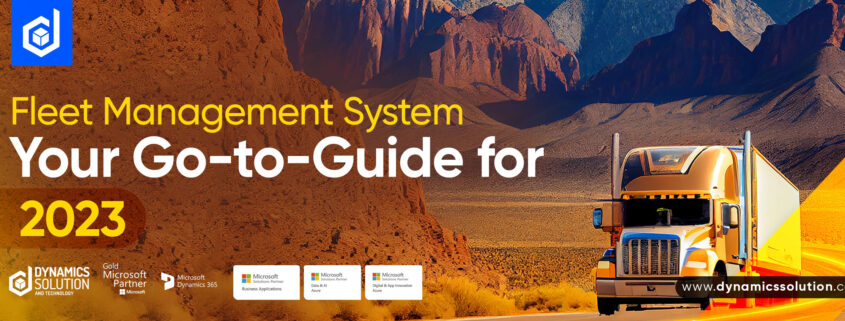Picture a fresh Monday morning—your office buzzing with energy. You’ve had your favorite power booster drink, and your fleet stands ready to complete daily targets. But in that pivotal moment before ignition, you ponder several essential questions. Are your routes optimized enough to save on fuel and time? Has the road safety department properly done with your fleet’s maintenance, ensuring minimal downtime? Have you considered the unpredictable weather that could impact delivery times? And a lot of other business success thoughts.
As you know, since 2021, things have diverted from traditional practices, and now you cannot trust the fuel prices, rising driver demands, and maintenance requirements. Among all this, customers are getting more demanding than ever before. By now, you might be thinking, what’s the solution, and how can your business efficiently overcome these day-to-day challenges? Well, the solid rock solution is cloud-based Fleet management software with all the features that can cater to these modern challenges.
But before diving straight into the details, let’s understand fleet management deeply.
What is Fleet Management?

The primary function of fleet management is to ensure the current and future smooth operation of a company’s fleet of vehicles. This is a broad phrase that encompasses many facets of management.
This necessitates not only regular checks to ensure that all vehicles are in good working order but also the monitoring and improvement of their operational efficiency.
Do You Know?
Fleet management is typically implemented by a single individual, who is referred to as the fleet manager. Therefore, fleet managers have a pivotal position that encompasses a wide range of responsibilities, both internal and external.
Why is Fleet Management Important?
Firstly, it’s a linchpin for cost control. It helps you in optimal resource utilization and enhances safety. Secondly, it promotes sustainability by reducing carbon emissions through route optimization and maintenance schedules. Thirdly, fleet management is indispensable for regulatory compliance. Many governments impose strict regulations on vehicle safety, emissions, and driver hours of service. Finally, it offers comprehensive reporting and analytics, allowing companies to make informed decisions and plan for future growth.
On the other side, if we talk about the facts, as per precedence research, the fleet management market reached a value of $22 billion in 2022 and is projected to rocket to $57.84 billion by 2032. This extraordinary growth offers a sea of opportunities for businesses looking to streamline operations and boost profitability.

Who Utilizes Fleet Management Capabilities?
Here’s a list of who utilizes fleet management:
- Transportation and Logistics Companies
- Delivery and Courier Services
- Construction and Heavy Equipment
- Public Transportation
- Government and Municipalities
- Utility Companies
- Service and Maintenance Companies
- Rental Car Companies
- Field Sales and Services
- Agriculture and Farming
- Schools and Universities
- Waste Management
Role of Fleet Managers in Making Your Business Successful
In this complex and challenging world of logistics, fleet managers take the wheel in a symphony of strategy and execution. They are the true captains of the roadways, expertly steering the convoy of vehicles, drivers, and state-of-the-art technology to guarantee a seamless journey for goods from origin to destination. In short words, fleet managers are the navigators of progress, shaping the destiny of their fleets.
With a hawk-like focus, they monitor everything from fuel efficiency to driver satisfaction, ensuring that their fleet operates at peak performance. They are armed with the precision of modern-day telemetry to read the pulse of their vehicles, ensuring that the supply chain stays healthy and vibrant. Moreover, they are the sentinels of punctuality, ensuring that goods reach their final stop faster than a caffeine-charged panther.
What is Fleet Management Software?
Fleet Management Software is the engine that drives everyday logistics operations. It’s not just about keeping an eye on vehicles; it’s your digital maestro. It is an advanced technological solution that compiles information from several sources about a fleet’s vehicles onto a single, unified platform with an all-encompassing dashboard.
It’s not just an app; it’s your crystal ball, foretelling the when and where of your fleet’s next move. It gives managers instantaneous data about their cars and employees, allowing them to make better decisions. The information gleaned by FMS includes not just velocity and temperature but also fuel levels, door statuses, and geographic position.
Research indicates that businesses that use modern fleet management systems are in a prime position to boost efficiency, guarantee compliance, and seize possibilities in a competitive market.
Key Features of Fleet Management Software

Key features of any perfect FMS are:
- Real-time GPS Tracking—provides live, precise location data for vehicles, enabling real-time tracking and course correction.
- Efficient Route Optimization—utilizes advanced algorithms to find the fastest, most fuel-efficient routes, improving delivery times and reducing costs.
- Proactive Vehicle Maintenance—schedules and tracks vehicle maintenance, sending timely reminders to prevent unexpected breakdowns.
- Fuel Consumption Monitoring—watches fuel usage patterns, identifying inefficiencies, and recommending cost-saving measures.
- Driver Behavior Analysis—monitors driver actions, promoting safer driving practices and reducing the risk of accidents.
- Compliance Management—simplifies regulatory compliance with report generation and record-keeping for audits.
- Inventory Control—efficiently manages spare parts and equipment inventory to ensure timely access to necessary items.
- Customer and Order Management—streamlines order processing, providing real-time updates and enhances customer satisfaction.
- Geofencing Capabilities—creates virtual perimeters for instant notifications when vehicles enter or exit predefined zones.
- Remote Vehicle Diagnostics—conducts remote vehicle health checks, identifying issues before they lead to downtime.
- Driver Communication Tools—facilitates real-time communication between dispatchers and drivers, ensuring coordination.
- Mobile Accessibility—allows on-the-go access via smartphones and tablets for remote fleet management.
- Customization and Integration—tailor the software to your specific needs and seamlessly integrate it with other systems.
- Alerts and Notifications—send notifications for critical events, from maintenance reminders to safety violations.
- Cost Tracking—monitors all fleet-related expenses, offering insights for budget optimization.
- Security and Anti-Theft Measures—provides security features like remote vehicle shutdown and stolen vehicle recovery assistance, safeguarding assets.
These features, collectively or individually, serve as the modern toolkit for fleet management, enabling businesses to navigate the road to success with efficiency, cost savings, and enhanced safety.
Steps to Find the Right Fleet Management Solution
Finding the right fleet management software is like selecting the perfect ship for your grand maritime adventure. So, follow these steps:
Step 1: Get Your Directions
Before diving into the fleet management software maze, take a moment to chart your approach. Define your goals, identify your pain points, and outline your budget. It’s like preparing your ship before embarking on an adventure – knowing your destination and resources is key.
Step 2: Cast a Wide Net
Don’t settle for the first fish that bites. Cast a wide net to reel in multiple options. Explore the market, browse websites, read reviews, and ask for recommendations.
Step 3: The Compatibility Check
Ensure that the software you’re looking for is compatible with your existing systems and hardware. You don’t want a square peg in a round cylinder. It’s like ensuring your puzzle pieces fit together seamlessly.
Step 4: Demo Time
Request demos from your shortlisted contenders. Dive in and take these ships for a test sail.
Step 5: Crew Feedback
Don’t steer the ship alone. Gather input from your team – the ones who’ll be navigating with this software.
Step 6: Smooth Sailing Support
Explore the customer support and training options. You want a vendor that’s got your back when the waters get rough.
Step 7: Fine-Print Inspection
Anchors aweigh! It’s time to scrutinize the contracts and agreements. Ensure you understand the terms and conditions, as well as any hidden costs, to avoid any surprises in the future.
Step 8: Chart a Course
Finally, make your decision. Weigh the pros and cons, compare your notes, and set sail with the fleet management software that aligns with your needs.
Which Solution to Opt for Your Business Needs
There are a lot of solutions out there, but to cater to the above challenges, you need to go for super-sonic software powered by a trusted company.
Let me introduce Dynamics Solution and Technology here—a Microsoft Gold partner company with a proven success record. DST, in partnership with an intelligent application explicitly built for fleet management, provides a one-stop solution to businesses.
We’ll provide you with a solution developed using Microsoft Dynamics 365. So, secure your fleet’s success with our extensive expertise in deploying custom software solutions for the logistics and supply chain industry. With the expertise of the relevant team, you may set sail toward operational excellence and limitless possibilities. Share your queries here!






